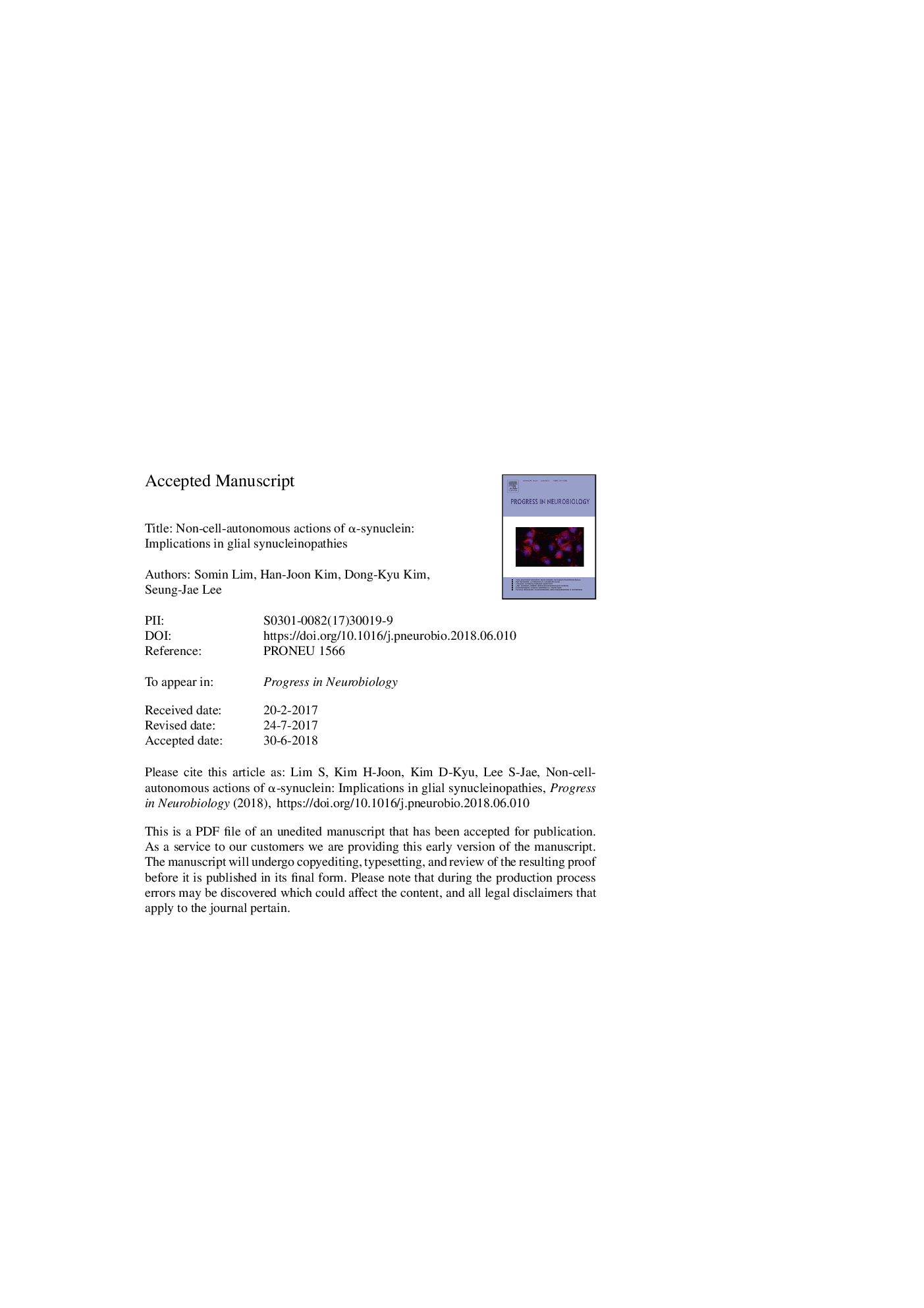| Article ID | Journal | Published Year | Pages | File Type |
|---|---|---|---|---|
| 8959226 | Progress in Neurobiology | 2018 | 56 Pages |
Abstract
Many neurodegenerative diseases are derived from the combined consequences of genetic and environmental factors. One of the common features implicated in the neurodegenerative processes is aggregation of disease-specific neuronal proteins. These proteins are accumulated not only directly in neurons, but also indirectly involve glial cells. Whereas the focus of research has been directed towards the impacts of protein aggregation upon neurons, the influence that it exerts on glial cells has been relatively overlooked. Recent studies, however, provide strong evidence on pathogenic responses of glial cells originated from the neuron-derived protein aggregates. Here, we critically examine the latest advancement in investigating how glial cells are activated in neurodegenerative disorders that are associated with α-synuclein aggregates. Often referred to as synucleinopathies, these include Parkinson disease, dementia with Lewy bodies, and multiple system atrophy. To further illustrate, we would discuss paracrine actions of α-synuclein aggregates secreted from neuronal cells in promoting pathogenic reactions from various types of glia and evaluate the non-cell-autonomous mechanism compared to a cell-autonomous one. Such analyses of the impacts of glial responses in neurodegenerative diseases, in the long term, could be further utilized in developing different treatments of the diseases and potentially discovering new drugs.
Keywords
RBDDMVDLBCNPSNARETLR2PDDTLR4LBSPIGDPLPCJDESCRTMSALNsNBIATNFαLPSNon-amyloid-β componentNACMBPPKANGFAPGCIsProteolipid proteinROSSNpcMultiple system atrophyAstrocyteRapid eye movement sleep behavior disorderNeuroinflammationneurodegeneration with brain iron accumulationLewy bodiesCreutzfeldt–Jakob diseaseAlzheimer diseaseParkinson diseaseprotein aggregationDementia with Lewy bodiessubstantia nigra pars compactaNeurodegenerationtumor necrosis factor αtyrosine hydroxylaseToll-like receptorGlial cytoplasmic inclusionsCNSDopaminecentral nervous systemendoplasmic reticulumLewy neuritesLipopolysaccharidesCerebrospinal fluidCSFendosomal sorting complexes required for transportGenome-wide association studiesGWASMicrogliaMapsdorsal motor nucleus of the vagusPantothenate Kinase-Associated NeurodegenerationGlial fibrillary acidic proteinMyelin basic proteinReactive oxygen speciesToll-like receptor 2soluble NSF attachment protein receptor
Related Topics
Life Sciences
Neuroscience
Neuroscience (General)
Authors
Somin Lim, Han-Joon Kim, Dong-Kyu Kim, Seung-Jae Lee,
